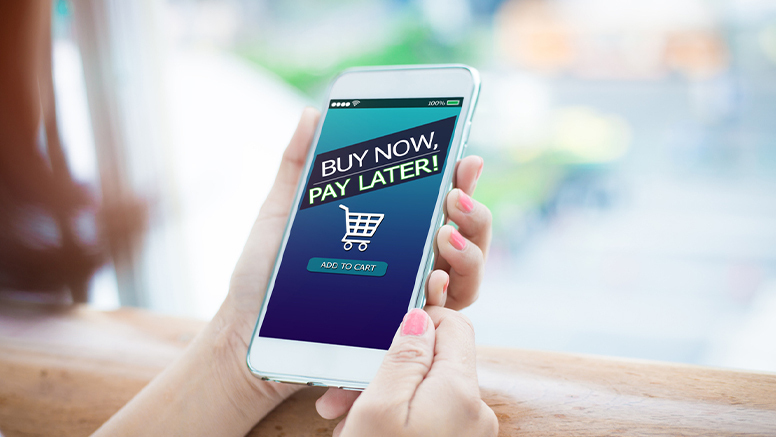The Risks of Using Buy Now Pay Later
When money is tight, the option to pay for bigger purchases in installments is a tempting solution. Buy Now Pay Later options (BNPL) are very popular, and many major retailers and service providers, like airlines, now offer the option. However, it’s important to understand the risks of using Buy Now Pay Later and treat the payment method as a type of debt.
What is Buy Now Pay Later, and How Does it Work?
The basic idea behind BNPL is that customers can buy items and then pay for them in installments over a set period of time, usually ranging from a few weeks to several months. These installments can be interest-free or may come with a small interest rate, depending on the terms of the BNPL agreement.
To use BNPL, customers typically select this option at checkout when making a purchase from a retailer that offers it. They will then be asked to provide some basic information, such as their name and address, as well as their credit or debit card details. The BNPL provider will then run a soft credit check to determine whether the customer is eligible for the service.
The Risks of Buy Now Pay Later Options Like Klarna
BNPL options, like Klarna, are tempting. When money is tight, the option to pay for something you want in multiple payments makes it feel like less of a splurge. The problem is it doesn’t save you money or eliminate the impact of the purchase on your big-picture spending. Instead, it creates a new way for you to give in to your impulse spending.
Shoppers who use BNPL typically spend 10% to 40% more when paying with the option.
The Risks of Buy Now Pay Later Options:
- It’s easier to lose track of payments.
- It may Increase your potential to overdraft your account.
- It encourages you to spend more than you can afford.
- It may cost more due to interest and fees (“pay in four” plans are usually interest-free)
Most pay-later options require you to set up automatic payments. While this does help prevent missed or late payments, it could increase the likelihood that you’ll overdraft your account if you live paycheck to paycheck.
7 Buy Now Pay Later Providers
Each BNPL provider may have different terms and conditions, fees, and interest rates, so customers should carefully consider their options before choosing a provider.

Affirm: allows customers to split their purchases into installments with 0-30% APR over a period of 3-48 months, depending on the purchase amount and retailer. Affirm also offers virtual credit cards and a savings account.

Sezzle: provides interest-free BNPL payment plans for purchases from a wide range of retailers. Payments are split into four equal installments that are due every two weeks.

Afterpay: allows customers to split their purchases into four interest-free installments that are due every two weeks. Afterpay is available for purchases from a wide range of retailers.

Splitit: allows customers to split their purchases into monthly payments on their existing credit cards without incurring interest or fees. Splitit is available for purchase from a wide range of retailers.

Perpay: offers interest-free BNPL payment plans for purchases from a wide range of retailers. Payments are split into bi-weekly installments, and the payment plan lasts for six weeks.

PayPal Pay in 4: allows customers to split their purchases into four interest-free installments that are due every two weeks. PayPal Pay in 4 is available for purchases from any retailer that accepts PayPal.

Klarna: provides a range of BNPL options, including interest-free payments over 4-6 weeks, longer-term financing with interest rates ranging from 0-19.99%, and a revolving line of credit with monthly payments.
Should I Use Buy Now Pay Later If I’m a Beyond Finance Client?
If you’re a Beyond Finance client taking on new debt is never recommended. You should avoid using credit cards or taking out new loans or credit cards. While BNPL options may seem harmless since they don’t require hard credit score inquiries and are for a short period of time, they are still risky.
Our Advice: Don’t Use Credit and Avoid Pay Later Options
Our advice is to avoid using credit or pay later options when you’re already paying off debt. It’s easy to lose track of payments, and convenient ways to spend money you don’t have on hand should be avoided.
If you’re already struggling with debt, your focus should be on paying off your existing debts and breaking spending habits that may have contributed to your debt.
If you can’t pay out of pocket for something, then chances are it’s not in the budget.
We know it can be hard to break the habit when you are used to relying on credit to cover expenses. But tackling debt means changing up your status quo, and it’s worth it in the long run.
